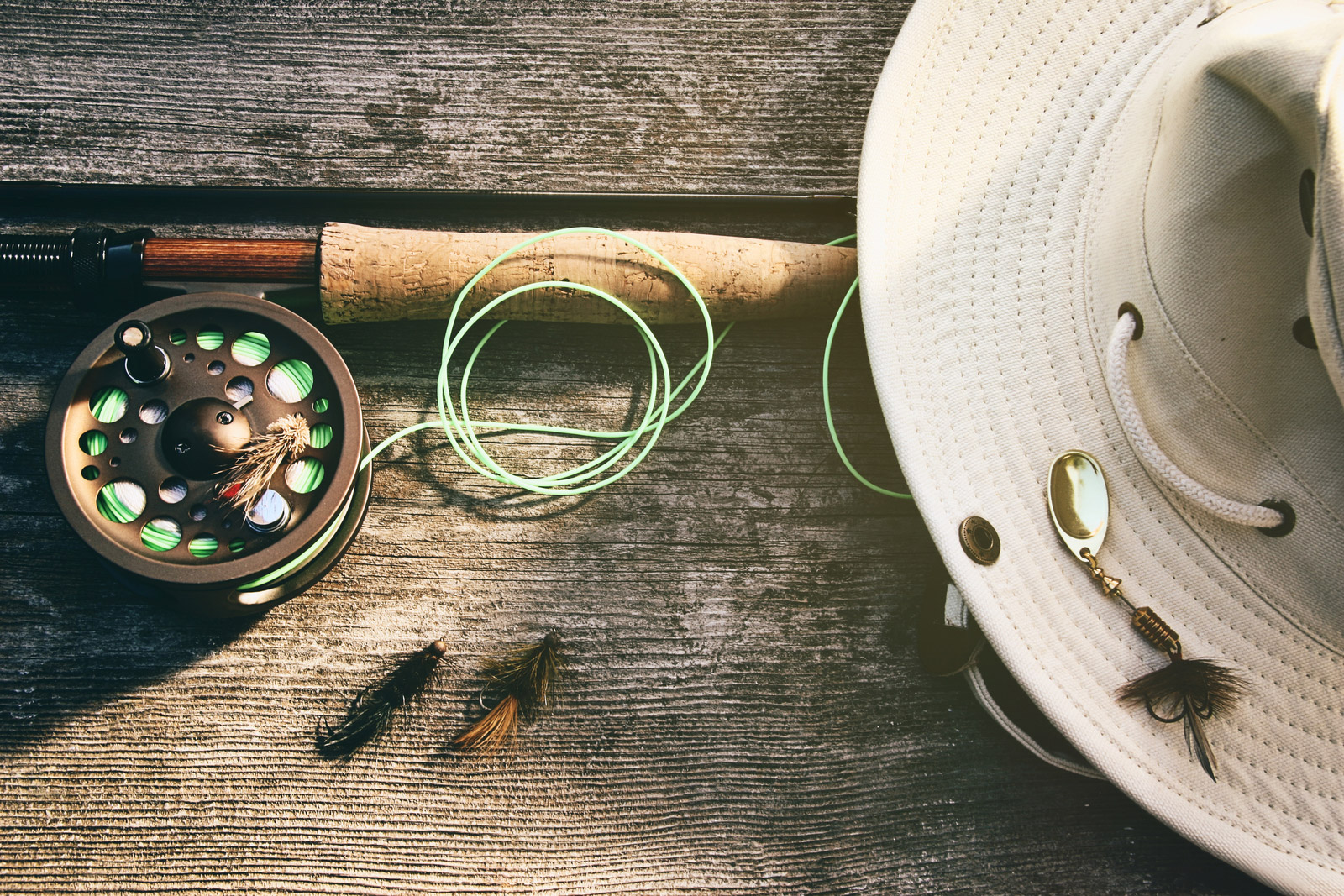Fly Fishing For Beginners Hook More Fish
Engaging with nature through fishing can provide a refreshing experience, especially for those new to the activity. Fly fishing involves specialized techniques that set it apart from more conventional forms of fishing.
Each cast contributes to skill development, which can drastically improve the likelihood of hooking fish.
Awareness of local conditions plays a significant role, as specific elements attract trout and various other species.
A quality fishing rod can greatly enhance your success rate, making it a priority for every beginner. Investing in reliable gear not only increases the enjoyment of the sport but also ensures you are well-prepared.
Mastering casting techniques is a journey that requires dedication, but with patience, individuals can truly enjoy their time while fishing on the water.
Essential Gear For New Anglers
Equipping yourself with the appropriate components enhances the experience for new anglers venturing onto the lake. Fishing rods serve as the backbone of your setup, allowing for effective casting techniques while being lightweight and sturdy.
A well-chosen rod increases your casting distance and precision, making a noticeable difference in your angling success.
Fishing reels are equally important in reeling in fish smoothly and efficiently.
Beginners often find spinning reels particularly beneficial for their user-friendly design, integrating seamlessly into your fishing adventures. Exploring various fishing line types, especially monofilament, can improve your results, as this line offers a forgiving response during casting and retrieval.
Tackle boxes keep your accessories organized and secure, storing important lures and baits neatly.
- Fishing Lures: These attract fish effectively, acting as your primary tools for a successful angling day. Start with a few reliable lures designed for local species, expanding your collection as you grow more experienced.
- Fish Hooks: Reliable hooks are fundamental to your tackle, facilitating proper attachment of lures and ensuring secure catches.
- Angling Net: A quality net assists with safely landing your catch without causing harm.
- Fishing Tackle: Beginner tackle packs offer a budget-friendly way to acquire diverse items, from hooks to lures.
- Fishing Vest: A vest provides quick access to tools and gear, enhancing your overall efficiency while fishing.
Acquiring quality gear from Outdoor Survivors guarantees your equipment will withstand the rigors of fishing, enabling you to focus on enjoying the great outdoors. With a solid foundation of gear, you can connect with nature while honing your skills.
Understanding Fly Patterns For Success
Effective fishing requires a solid foundation in selecting the right fly patterns. These patterns are not just decorative; they play a pivotal role in enticing various species of fish.
Knowledge of specific designs and their purposes can dramatically impact your success on the water.
For instance, different fish species, such as trout and bass, have unique preferences that align with certain fly types.
- Introduction to Fly Patterns
- Attracting fish requires a deep understanding of specific fly patterns.
- Investing time in learning about fly design can significantly boost catch rates.
- Key Fly Patterns for Various Fish Species
- Trout:
- Dry flies like the Adams and Elk Hair Caddis are well-liked.
- Emergers and nymphs are sought after during specific hatches.
- Bass:
- Streamers such as Clouser Minnows and Woolly Buggers mimic baitfish effectively.
- Poppers can dramatically change your success rate in warmer months.
- Panfish:
- Small, colorful flies like the Sally and Soft Hackles are excellent options.
- A small indicator can enhance effectiveness in deeper waters.
- Trout:
- Impact of Weather on Fly Choice
- Temperature and precipitation have a notable effect on insect activity.
- Overcast days generally lead to increased fish activity, altering strategies for fly selection.
- Seasonal Considerations
- Distinct hatches and fish behaviors emerge with each season.
- Spring and fall demand careful attention to matching the hatch for greater success.
- Tips for Selecting the Right Fly
- Observing local insect populations can guide your fly choices effectively.
- A diverse fly box ensures preparedness for any angling situation.
With insight into these key aspects of fly patterns, anglers can significantly enhance their fishing experiences. This knowledge not only complements your fishing gear but also sets up your next adventure. A well-prepared angler recognizes the importance of matching their fly reel to the conditions on the water.
As you sharpen your skills, honing your casting technique is just as important as fly selection. The following section will cover effective strategies for casting your fly rod with precision, ensuring that you maximize your chances of success.
| Fish Species | Recommended Fly Patterns | Seasonal Considerations |
|---|---|---|
| Trout | Dry flies like Adams and Elk Hair Caddis | Spring and fall require matching the hatch |
| Bass | Streamers like Clouser Minnows and Woolly Buggers | Increased activity on warmer days with poppers |
| Panfish | Small, colorful flies like Sally and Soft Hackles | Indicator use enhances effectiveness in deeper waters |
Tips For Casting Your Fly Rod
Successful casting with your fly rod hinges on a solid grasp of technique and consistent practice. Focus on avoiding common mistakes such as excessive wrist movement, which can severely impact both accuracy and distance.
Overloading your rod with an excessive amount of line leads to frustrating tangles, particularly detrimental when targeting panfish.
Precision enhances your experience, as aiming for specific spots on the water can significantly boost your success rate.
Engaging in targeted drills with practice flies, often using rubber weights, minimizes potential damage to your surroundings and sharpens your skills.
The action of your rod plays a considerable role in casting efficiency and fly presentation, with fast action rods allowing for swift line handling, enhancing both distance and accuracy.
To further improve your casting, mastering techniques like the roll cast and overhead cast is vital for adapting to varying water conditions.
These casts are particularly useful for fly fishing for beginners eager to refine their abilities.
Always ensure that your fly fishing gear is of high quality, sourced from trusted retailers like Outdoor Survivors, so your equipment performs reliably in nature, fully supporting your outdoor pursuits.
Choosing The Right Fishing Reel
Choosing the appropriate reel can significantly enhance your fishing success. Various types of fishing reels cater to different styles and techniques.
Spinning reels are versatile, appealing to both novices and those with more experience.
Baitcasting reels, designed with precision, are favored by skilled fishers for their accuracy.
Fly reels excel specifically within fly fishing techniques, tailored to meet the unique demands of fly fishers. While selecting your reel, consider elements such as gear ratio; a higher ratio translates to faster retrieval speeds, improving efficiency and enjoyment on the water.
Routine maintenance is crucial—regular cleaning and lubrication will ensure your reel performs optimally over time. Matching your gear with your fishing style can lead to substantial improvements in your overall experience.
- Comparing Reel Types
- Spinning Reels: Excellent for beginners; adaptable for various fishing environments.
- Baitcasting Reels: Preferred by experienced anglers for their accuracy and control.
- Fly Reels: Specialized for wet fly and dry fly fishing techniques.
- Key Features to Evaluate
- Gear Ratio: Direct influence on retrieval speed; higher ratios allow for quicker collection of line.
- Drag System: Crucial for controlling fish; prioritize reels with durable components.
- Weight: Ensure balance between your rod and reel to improve casting efficiency.
- Maintenance Practices
- Regular Cleaning: Clear away saltwater, dirt, or debris after each fishing trip.
- Lubrication: Apply appropriate reel oil to the moving parts to maintain functionality.
- Unique Insights for Fly Fishers
- Materials Matter: Investing in high-quality components, like carbon fiber, enhances reel durability.
- Matching Gear: Choose a reel that aligns well with your chosen fishing patterns and style.
With the skills from the Tips for Casting Your Fly Rod, making informed choices about your fishing reel will elevate your overall experience. Every detail counts when selecting the right equipment, impacting your success on the water.
As you refine these techniques, the next logical step is exploring Best Practices for Catching Trout, which will ensure your skills are sharp and ready for any challenge you may face while fishing.
Best Practices For Catching Trout
Mastering the art of trout fishing can lead to rewarding experiences and thrilling catches. Successful anglers know that trout favor cold, clear water with high oxygen levels, making their habitats essential for your strategy when you’re fishing.
Changes in seasons affect their behavior, guiding your choice of fishing spots throughout the year.
Implementing effective techniques is paramount and can be the difference between a barren day and a successful outing.
Stealth is crucial; avoiding detection often leads to better chances at larger fish. Ensuring the right size of the fly is integral to your success.
Local fly shops can be invaluable resources for tailored recommendations based on your location and current conditions.
- Trout Habitats:
- Trout thrive in cold, clear water with plenty of oxygen, enhancing your chances.
- Seasonal changes help identify where to target your efforts when you’re fishing.
- Effective Techniques:
- Employ stealthy approaches to avoid spooking fish that might be feeding.
- Utilize natural bait or flies, mimicking local forage to attract them.
- Catch and Release Importance:
- Practicing catch-and-release contributes to sustaining trout populations in your waters.
- Employing proper techniques minimizes stress on fish, enhancing their survival rate.
- Seasonal Strategies:
- Spring offers higher success as fish become more active during spawning.
- In the fall, trout aggressively feed, making it a prime time to fish.
Catch-and-release practices are beneficial for maintaining a healthy ecosystem. Proper techniques are important to reduce stress on fish, allowing them to thrive in natural habitats. A reliable rod and reel combo plays a significant role in your overall fishing experience, ensuring you’re ready for varying conditions. The quality of gear you use matters, particularly when deep in the woods. Outdoor Survivors offers tested, high-quality camping and survival gear, equipping you for any outdoor adventure you might encounter.
The Importance Of Fly Selection
Choosing the appropriate fly significantly influences your fishing endeavors. Passionate anglers understand that pairing the right fly with existing conditions enhances their potential for a successful catch.
Each fly is designed to imitate the local food sources familiar to fish.
For example, using a floating fly during a hatch can effectively entice fish.
The fly selection process should account for factors such as water temperature, clarity, and the time of day. Familiarity with local insect hatches offers an advantage when attempting to see a fly that attracts fish.
Selecting your fly wisely can greatly maximize your time spent on the water.
- Understanding Fly Selection
- The significant role of selecting the right fly in your fishing success.
- Various flies replicate local food sources, appealing to fish.
- Matching Flies to Conditions
- Several key factors influence your fly selection:
- Weather conditions such as temperature, wind, and sunlight.
- Water temperature and clarity should dictate your choice.
- The time of day and fish behavior can alter your strategy.
- Consider tips for placing your fly correctly based on these conditions.
- Several key factors influence your fly selection:
- Local Insect Hatches
- Knowledge of local insect hatches enhances your fly selection process.
- Explore an overview of typical hatches prevalent in various regions.
- Unique Considerations
- Discover lesser-known facts about fly types and their effectiveness.
- Gain insights into how materials and colors impact visibility and attraction.
For successful outdoor activities, having reliable gear is paramount. At Outdoor Survivors, we provide high-quality equipment that endures the challenges of nature. Proper fly selection, combined with solid gear, can elevate your fishing experience. As you prepare for your next venture, ensure your gear performs as rigorously as you do.
- Choosing the right fly can increase catch rates by 50% or more.
- Fish are more likely to bite when the fly closely resembles their natural food sources.
- Understanding water temperature can influence fish activity; warmer water often leads to increased feeding.
- Local insect hatches can vary by season, affecting the best fly choices for specific times of the year.
Mastering Basic Casting Techniques
Mastering the fundamentals of casting is a vital skill every angler should develop. These foundational casting methods allow for greater success when you start fishing.
Achieving proper rhythm and timing is necessary for accuracy, while effective body positioning and coordinated arm movements play a significant role in enhancing your overall technique.
To prepare for your next fishing trip, practicing casting techniques at home can yield significant improvements.
Visualizing your casts enhances mental engagement, contributing to skill refinement. Selecting the right fly line makes a notable difference in how your fly presents to targeted fish species.
Troubleshooting common casting issues, such as line tangles, can help elevate your casting performance.
- Understanding Basic Casting Mechanics
- Mastering cast duration and rhythm ensures better accuracy while using your rod.
- Proper body positioning and arm movement contribute to effective casting and ease when trying fly fishing.
- Practicing Casting Techniques at Home
- Utilize your backyard or open areas; even a small space can be conducive to improvement.
- Incorporate visualization techniques to enhance mental focus and refine your skills.
- Troubleshooting Common Casting Issues
- Identify problems like tangles or inaccurate casts to significantly improve your technique.
- Adjusting line tension can resolve many casting discrepancies and enhance your experience.
- Additional Tips for Improvement
- Filming your casting sessions aids in technique analysis and self-correction.
- Joining local fishing groups provides personalized feedback and helps refine your skills.
By honing these techniques, anglers can confidently enjoy their time outdoors. This mission aligns with the values of Outdoor Survivors, which emphasizes reliable gear that meets the demands of outdoor adventure. A great casting technique invigorates your fly fishing experience, allowing you to focus on the thrill of catching your first fish.
Where To Fly Fish Locally
Exploring local waters can significantly enrich your fly fishing pursuits. Many enthusiasts often overlook the excitement found in targeting smaller fish that offer both thrill and challenge.
Researching rivers, lakes, and streams known for their productive waters allows you to discover new fishing opportunities.
Seasonal changes play a role in fish behavior; for instance, understanding how warmer months impact feeding habits is beneficial.
Proper fly selection remains paramount—using a variety of fly options increases your chances of hooking fish. Engaging with local anglers often leads to uncovering hidden gems, enhancing your fishing experience.
Familiarizing yourself with local regulations ensures sustainable practices while casting your line. Utilizing quality gear, like an Orvis rod, is essential for success.
- Popular Local Spots: State parks and conservation areas typically feature excellent fishing opportunities.
- Hidden Gems: Lesser-known waters often provide a peaceful escape from crowded fishing locations.
- Local Regulations: Always verify fishing licenses and size limits to ensure compliance.
Utilizing fishing apps can help track conditions and determine the best times to get the fly in the water. Connecting with local fishing groups fosters insights and enhances your fishing knowledge. Quality gear is crucial because your equipment should work as hard as you do. At Outdoor Survivors, we provide reliable equipment designed to withstand the rigors of outdoor adventures. Investing in quality gear not only ensures a successful outing but also improves your overall experience. With adequate preparation, you’ll uncover the finest fly fishing escapades.
| Aspect | Details |
|---|---|
| Fishing Locations | State parks and conservation areas |
| Hidden Opportunities | Lesser-known waters for peaceful fishing |
| Regulations | Verify fishing licenses and size limits |
| Gear Quality | Reliable equipment like Orvis rods |
Ready to Start Fly Fishing?
Fly fishing offers a unique and rewarding experience for beginners willing to invest in quality gear and hone their skills. By understanding the importance of selecting the right fly patterns, mastering basic casting techniques, and considering local conditions, new anglers can greatly improve their chances of success. Engaging with local fishing communities and adhering to regulations further enhances the experience. With dedication and the right equipment, available from trusted providers like Outdoor Survivors, beginners can look forward to countless enjoyable days on the water, connecting with nature and refining their craft.



No comment